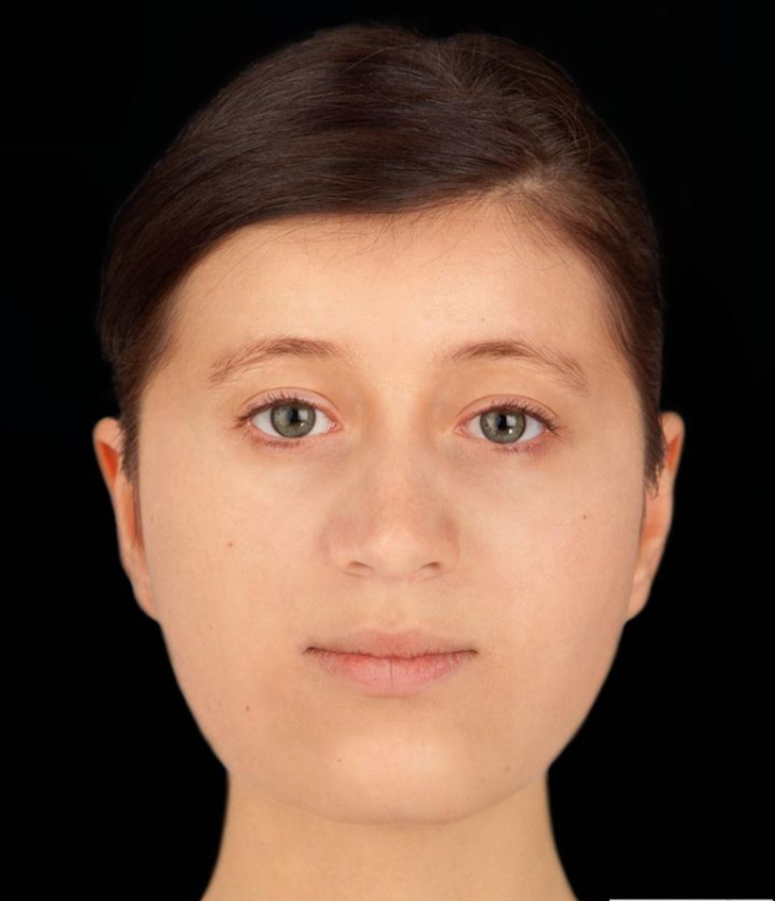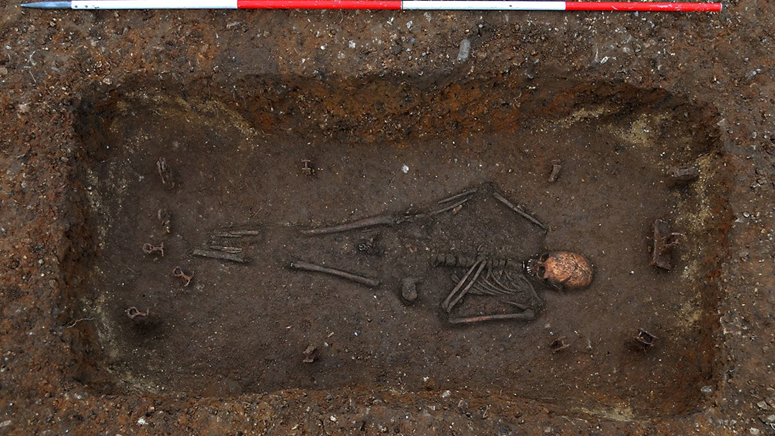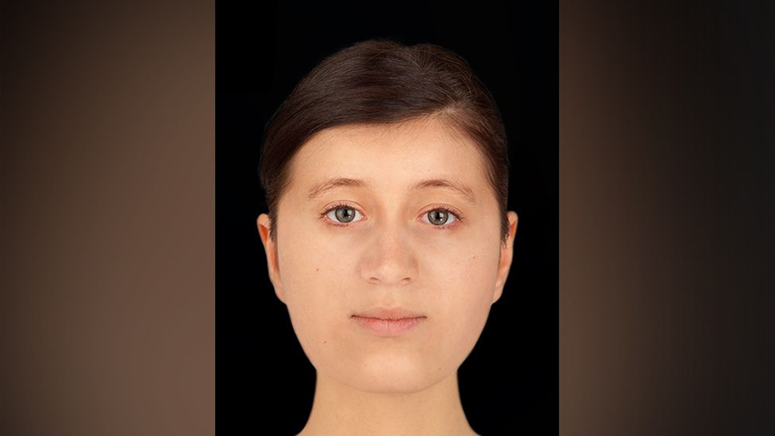Revealing the face of a girl who died more than 1,300 years ago

With the advancement of technological tools, scientists and forensic imaging experts were able to identify the face of a girl and reconstruct her features, especially since she died more than 1,300 years ago. Her discovery dates back to 2012, when her skeleton was excavated, buried on a wooden bed with a golden cross next to her chest, specifically in Cambridgeshire.
Revealing the facial features of a girl from the seventh century

According to what was reported on the BBC website, the credit for reconstructing the face of the seventh-century girl goes to forensic artist and imaging consultant Hugh Morrison, who relied on measurements of the young woman’s skull and tissue depth data to draw the final shape of her features, and stated, “She had an eye with a diameter slightly lower than Her right eye is about half a centimeter.”
He went on to explain that, thanks to a detailed analysis of the teenager's bones and teeth, it was found that she was born near the Alps, in southern Germany, and then moved to the Cambridgeshire Falls in the year seven, where her body was excavated.

In turn, archaeologist Dr. Sam Leggett expressed her gratitude for being able to see the girl’s true identity, saying, “I am used to seeing faceless people, So it was interesting to be able to know what the girl looked like,” she continued, “According to the tests, it was found that the teenager relied mainly on protein in her diet when she was in Germany, but the matter changed when she arrived in Trumpington.”
By conducting isotope analysis at the University of Cambridge, Dr. Leggett confirmed that the teenager may have been suffering from an illness, which mainly affected her diet. The results also indicate that the girl may have arrived as a bride or to join a monastic house, which influenced Primarily in her daily routine, it is said that she was an elite woman who was heavily involved in the early church.
The teenager's photo and everything found on her excavation are set to go on display at the University of Cambridge as part of a new exhibition "Under Our Feet: The Archeology of the Cambridge Area" running until April 14, 2024, forensic photographer Hugh Morrison said on his official account on the social media platform Instagram. .
Source: websites

